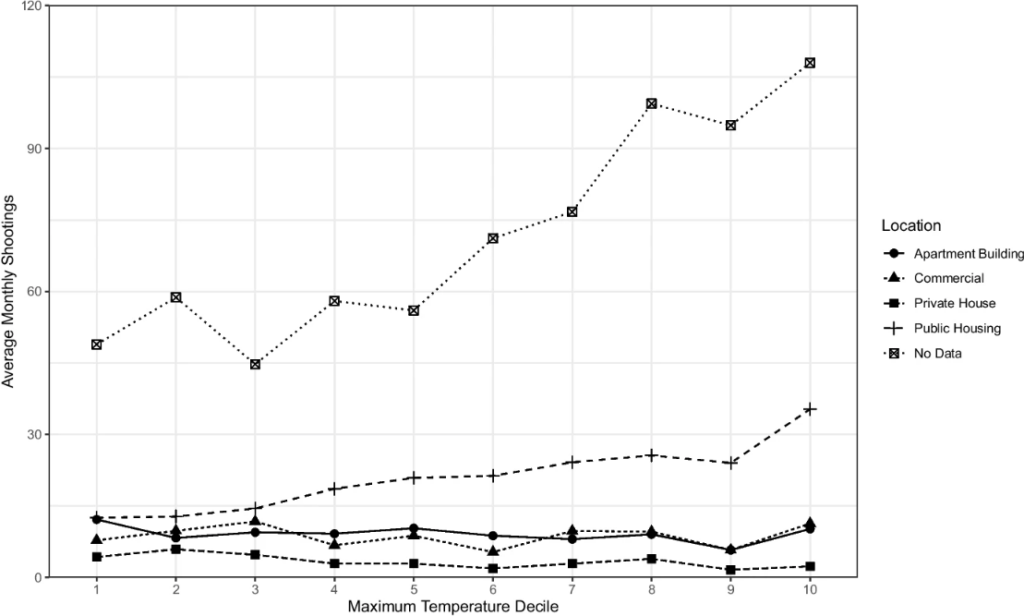Sun's Out, Guns Out
Firearm violence in public housing has been shown to increase with rising temperatures, but access to air conditioning may mitigate this risk.

Read Time: 2 minutes
Published:
Living in public housing in America comes with challenges. Concerns about gun violence, especially in the summer months and in urban environments, are common. Summer hits cities hard. Tempers flare in the heat, leading to an increase in violent behavior and aggression. Combine this with lax firearm regulations and extreme heat patterns, and the conditions for gun violence intensify.
Many public housing units do not have central air. To cool off, some residents let their window air conditioning units (AC) run constantly, but others leave their windows open out of necessity, not choice.
Urban housing projects often lack cooling systems because federal regulations, such as those from the U.S. Department of Housing and Urban Development (HUD), only require buildings to provide residents with heat. As a result, public housing is designed primarily to retain heat. Buildings are often made with brick or concrete, which absorb and trap warmth, contributing to the urban heat island effect (a phenomenon where urban areas experience higher temperatures than surrounding areas).
Additionally, residents who are elderly, low-income, or have disabilities often cannot afford to use AC units. Cooling systems are more than a luxury, they may serve as essential protection against gun violence for the 9 million people living in public housing in the U.S.
A recent study by Leah Roberts and colleagues examined how outdoor heat and AC use may influence firearm violence in public housing managed by the New York City Housing Authority (NYCHA). They analyzed data from 2012 to 2017 regarding AC access, NYCHA shooting incidents, and electricity consumption patterns.

They found a clear link: firearm violence in public housing increased more sharply with rising temperatures than in other settings. During the hottest months (84–87°F) there was an increase in electricity consumption (likely due to air conditioning unit use). Notably, higher electricity use during these hot days was linked to a significant decrease in shootings. Results suggest AC may reduce heat-driven public housing gun violence.
Researchers also conducted a sensitivity analysis looking into the link between shooting incidence and AC access. Even using rough estimates, developments with greater AC access had lower expected shooting rates.
As climate change fuels more frequent and intense heat waves, access to cooling should be a key piece of violence prevention. Expanding cooling infrastructure in public housing could offer timely public safety benefits alongside longer-term policies.



